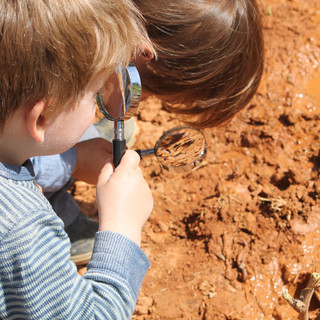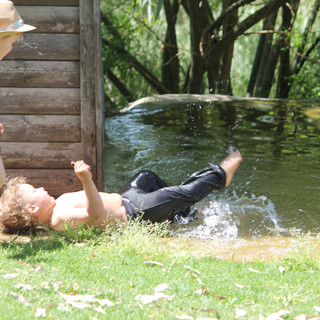Sensory Games
- Natalia Kokotou
- Apr 13, 2016
- 3 min read

One of the amazing things about outdoor play is that, just as you think nothing is really going to happen, something does. The children come up with a great new game.
Today it was a muddy puddle full of hidden wonders.
We weren’t prepared for one of these as it has been unseasonably dry. For once, the wellies and waterproofs were left at home but a tap had been running and a luscious gooey mess awaits us. The game starts as one boy allows himself to slowly sink into the mud and then, amidst peels of laughter, screams “help, I’m stuck, pull me out” and someone rushes to his rescue every time. Eventually he falls flat on his back and covered in mud a few of them begin to investigate more closely. They prod the mud with sticks and squeeze it through bare fingers and then, out pops a worm.
Without any fanfare one of them softly picks it up and feels it between his fingers, another dangles it on a stick and a third runs for the magnifying glass and watches it closely back on the ground in it’s natural habitat.
They eventually grow tired of the mud, in that part of the garden anyway, and move over to where the rest of the group is watering their vegetable patch.
The children form a solemn line as they move back and forth between the vegetables and the tap. They carefully balance their full watering cans on the way back and triumphantly tip out the contents over the plants. We notice how skilled they have become at this since they first started looking after the garden, making sure the water falls at the root of each plant.
Back at the hut, there’s a refreshing surprise. A trough full of water has been placed under the mulberry tree along with all sorts of pipes and funnels, pine cones, nuts, twigs and stones for the children to experiment with. In another corner, part of an old barrel has been turned into a sandpit and objects are hidden in the sand for inquisitive fingers to find.
The pond is always a great fascination. The children now know to lie on their stomachs at the edge of it and it is the first thing most of them do on arrival. This is the best position to peer over the edge and get a good look at the tadpoles. They trail a hand in the shallow water and every now and then manage to catch a wriggly tadpole, hold it for a moment and throw it back in. A couple of the boys take it further today, stretching their boundaries. They move over to the shallow end and dip a toe in, followed by a testing hand. By the end of it they are lying in the water and kicking their legs, their clothes soaking wet.
In preparation for Greek Easter we make Easter candles (“lambades” in Greek). A wealth of materials has been layed out on a table. Things that have been meticulously collected by the children over the past few months but also beeswax, chanced upon in the beekeeper’s hut. Dried flowers and grasses are lifted with interest, one boy sets about cutting dried leaves into tiny pieces. Beeswax is squeezed and moulded and twigs are stuck into it. Long strands of dried grass are wrapped around a composition and a knot is tied. Once they are satisfied with exploring the textures, the children drift off and the mothers sit down to decorate Easter Candles.




















































Comments